Agricultural Marketing Assignment Help Sample by VAH Experts
Evaluate the role of cooperatives in improving agricultural marketing. Use relevant theories and real-world examples to support your argument?
Introduction: Agricultural cooperatives play a vital role in enhancing the efficiency and profitability of agricultural marketing. By pooling resources, farmers can achieve economies of scale, negotiate better prices, and access wider markets. This essay examines the importance of cooperatives in agricultural marketing using key theories and real-world examples.
The Role of Cooperatives in Agricultural Marketing: Cooperatives provides collective bargaining power, reducing exploitation by intermediaries and ensuring fair pricing. According to Transaction Cost Economics Theory, cooperatives help minimize marketing costs and inefficiencies by streamlining supply chains. Additionally, cooperatives improve access to credit, storage facilities, and transportation infrastructure.
Challenges Faced by Agricultural Cooperatives: Despite their advantages, cooperatives often face governance issues, mismanagement, and limited access to capital. Bureaucratic inefficiencies and lack of member participation can also hinder their success.
Real-World Examples: In the UK, organizations such as Arla Foods and the Scottish Agricultural Organisation Society (SAOS) support farmers by providing collective marketing services. In Kenya, cooperatives like the Kenya Tea Development Agency (KTDA) have helped small-scale tea farmers achieve better pricing and global market access.
Conclusion: Agricultural cooperatives enhance marketing efficiency and ensure fair trade for farmers. Strengthening cooperative governance and providing financial support can further enhance their role in agricultural marketing.
References
- Williamson, O. E. (1985). The Economic Institutions of Capitalism.
- Birchall, J. (2004). Co-operatives and the Millennium Development Goals.
- FAO (2019). The Impact of Cooperatives on Agricultural Development.
Agricultural Marketing Assignment Help Sample by VAH Experts
List the characteristics and types of agricultural marketing.
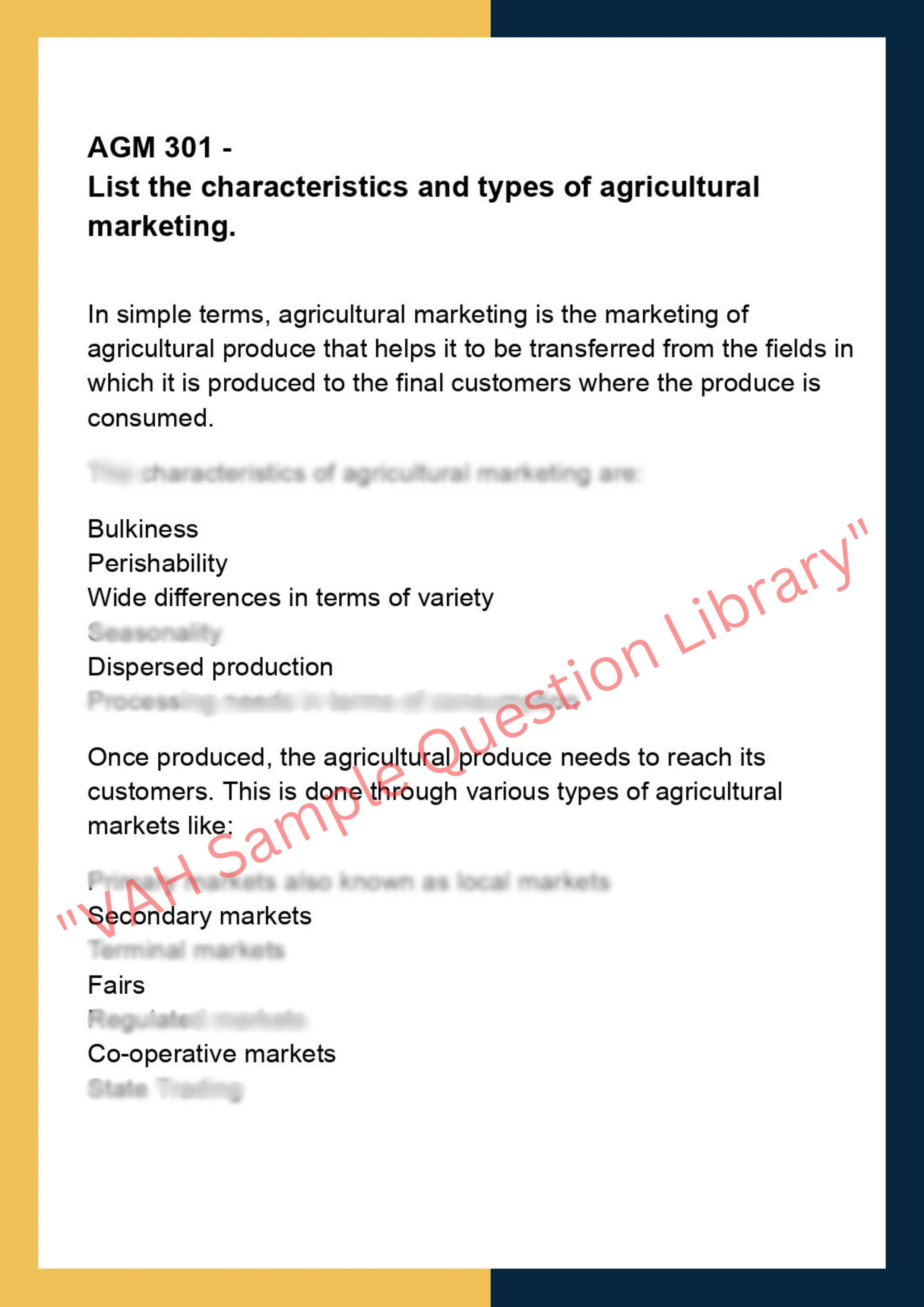
Agricultural Marketing Assignment Help Sample by VAH Experts
Critically assess the impact of digital marketing on the sales of agricultural products. Use relevant theories and real-world examples to support your argument?
Introduction: Digital marketing has transformed the agricultural sector by providing farmers and agribusinesses with innovative ways to reach consumers. Online platforms, social media, and e-commerce have improved the accessibility and visibility of agricultural products, leading to increased sales. This essay evaluates the impact of digital marketing on agricultural product sales using relevant theories and real-world case studies.
The Role of Digital Marketing in Agriculture: Digital marketing includes online advertising, social media marketing, email marketing, and search engine optimization (SEO). The Diffusion of Innovation Theory by Rogers explains how technology adoption, such as digital marketing, spreads among farmers and agribusinesses, influencing their market presence.
Platforms like Facebook, Instagram, and YouTube allow farmers to connect directly with consumers, eliminating intermediaries and improving profit margins. E-commerce websites such as Alibaba and Amazon have also enabled small farmers to reach global markets.
Challenges of Digital Marketing in Agriculture: Despite its benefits, digital marketing faces challenges such as digital illiteracy, limited internet access in rural areas, and high competition. Many farmers lack the technical knowledge required to leverage online marketing effectively.
Real-World Examples: In India, platforms like Agribazaar and DeHaat have revolutionized the way farmers sell their products, offering a direct-to-consumer model that reduces dependency on middlemen. In the UK, digital marketing strategies implemented by organic food brands have increased direct sales through websites and social media engagement.
Conclusion: Digital marketing has significantly influenced agricultural sales by expanding market reach and improving profitability. However, investments in digital literacy and internet accessibility are necessary to ensure its widespread adoption among farmers.
References
Rogers, E. M. (2003). Diffusion of Innovations.
Kotler, P., & Armstrong, G. (2020). Principles of Marketing.
FAO (2021). The Role of E-commerce in Agricultural Development.
Agricultural Marketing Assignment Help Sample by VAH Experts
Critically evaluate the role of agricultural marketing in enhancing food security. Use relevant theories and real-world examples to support your argument?
Introduction: Agricultural marketing plays a crucial role in ensuring food security by facilitating the distribution of agricultural products, stabilizing prices, and enhancing farmers' incomes. Efficient marketing systems help bridge the gap between food production and consumption, ensuring that food reaches consumers at the right time and price. This essay examines the significance of agricultural marketing in enhancing food security, supported by key theories and real-world examples.
The Role of Agricultural Marketing in Food Security: Agricultural marketing encompasses various activities, including transportation, storage, processing, and pricing. A well-functioning marketing system reduces post-harvest losses and ensures a steady supply of food products. The Agricultural Value Chain framework highlights how different actors, from farmers to retailers, contribute to food distribution efficiency.
The Law of Supply and Demand plays a vital role in agricultural marketing, affecting food availability and affordability. Government interventions, such as price support policies and subsidies, help stabilize food markets and ensure fair compensation for farmers, reducing the risk of food shortages.
Challenges in Agricultural Marketing: Despite its importance, agricultural marketing faces challenges such as inadequate infrastructure, price volatility, and market access issues for small-scale farmers. The lack of efficient storage and transportation facilities leads to significant food wastage, threatening food security. Additionally, price fluctuations affect both producers and consumers, necessitating regulatory mechanisms to ensure market stability.
Real-World Examples: Countries like the Netherlands and India have implemented advanced agricultural marketing strategies to enhance food security. The Netherlands’ use of cooperative marketing and technological innovations in logistics has improved food distribution efficiency. Similarly, India’s e-NAM (Electronic National Agriculture Market) initiative has provided farmers with better access to markets and fair pricing.
Conclusion: Agricultural marketing is integral to food security, ensuring that food reaches consumers efficiently while supporting farmers’ livelihoods. Governments and stakeholders must invest in infrastructure, market access, and policy frameworks to enhance the effectiveness of agricultural marketing systems.
References
- Kotler, P., & Keller, K. L. (2016). Marketing Management.
- FAO (2020). The State of Agricultural Commodity Markets.
- Acharya, S. S., & Agarwal, N. L. (2011). Agricultural Marketing in India.







.webp)
.webp)

.webp)



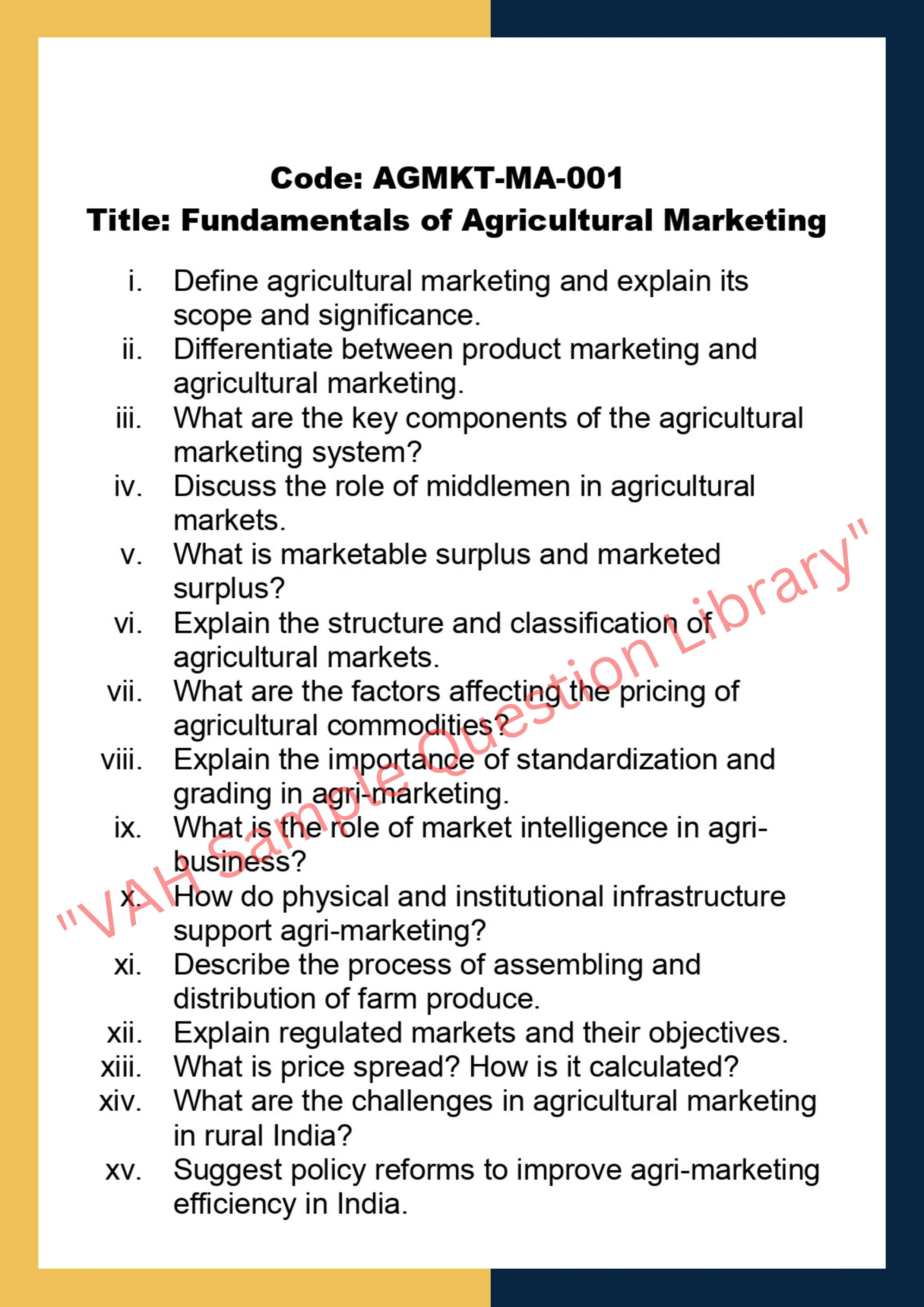
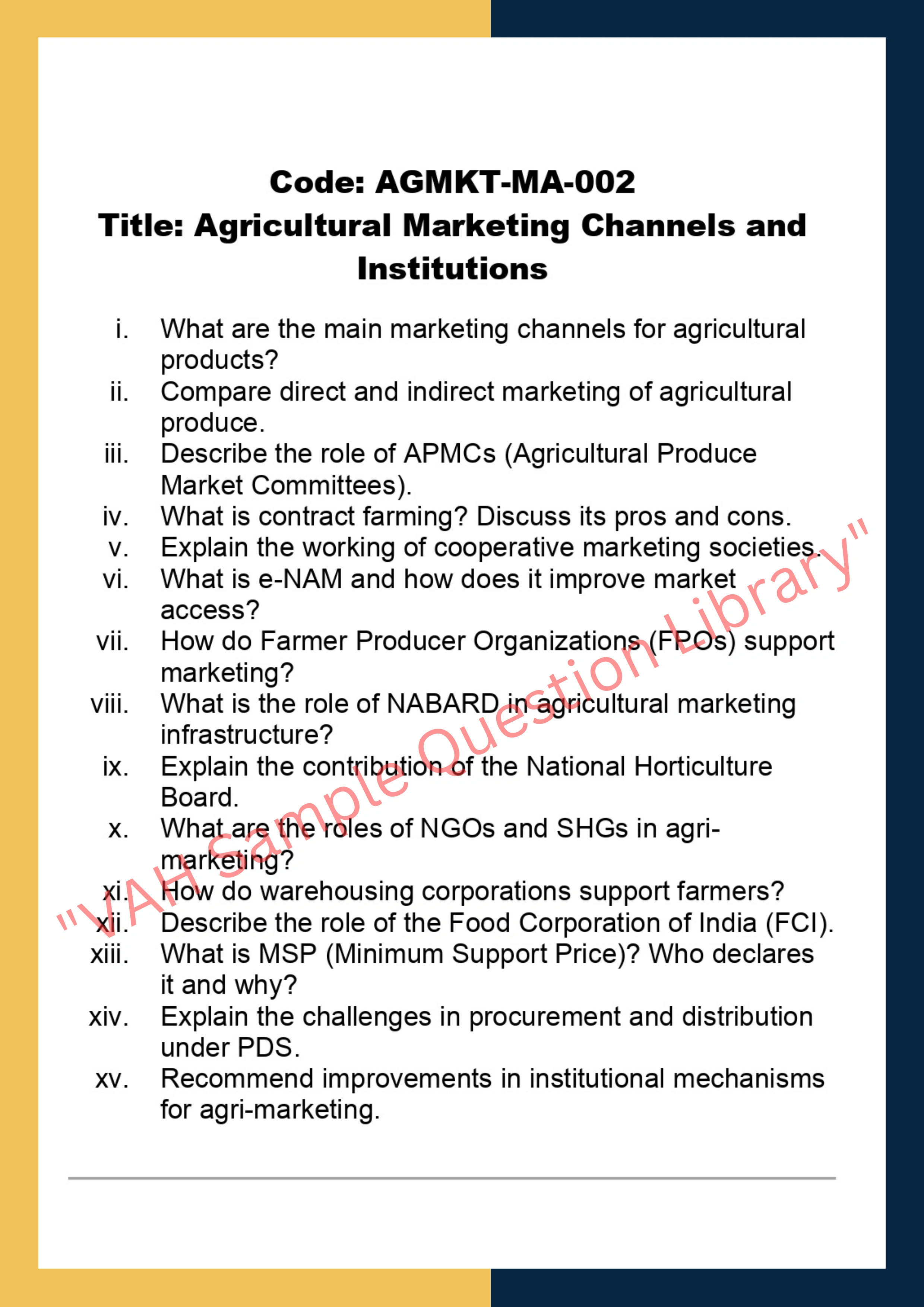
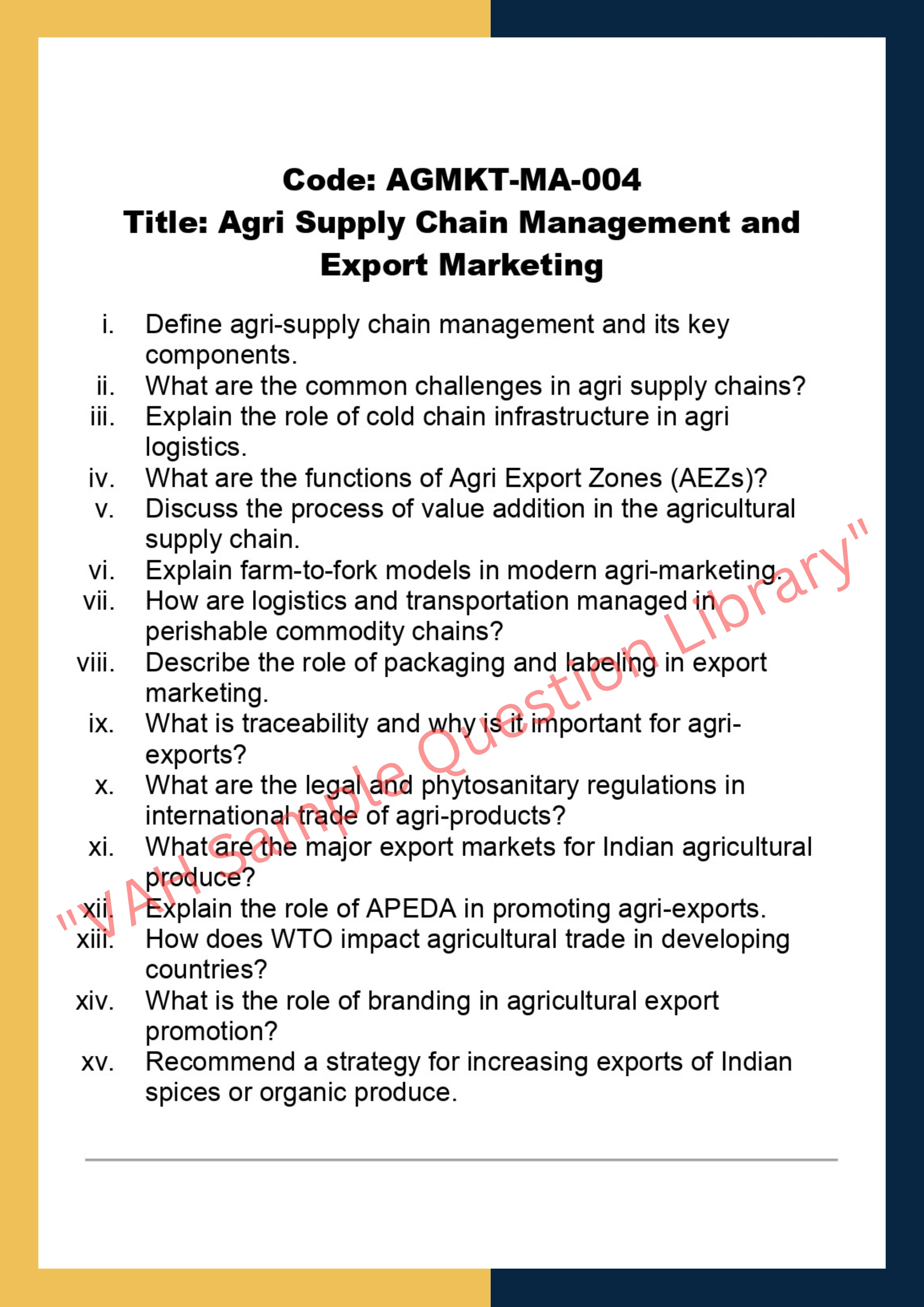
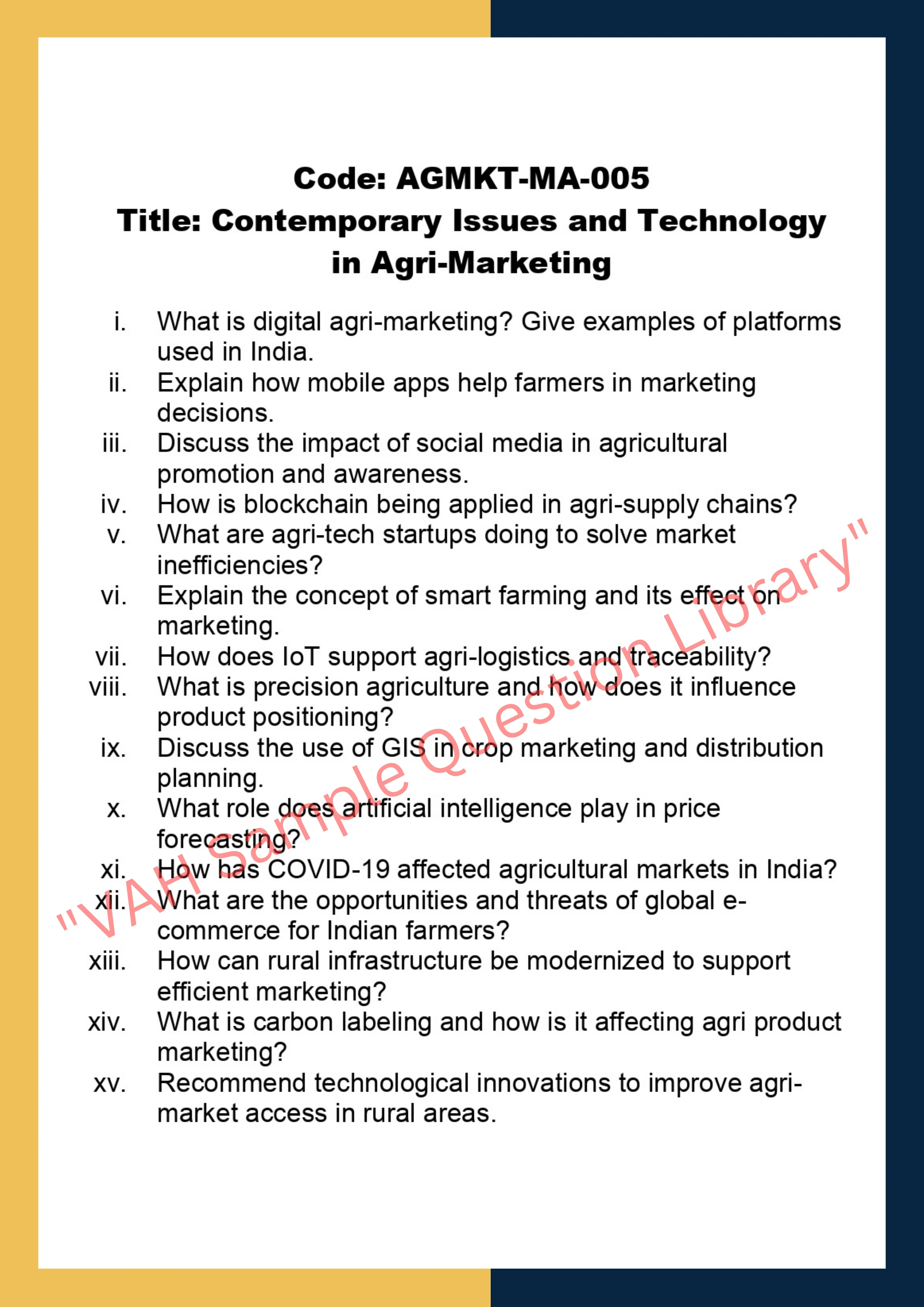
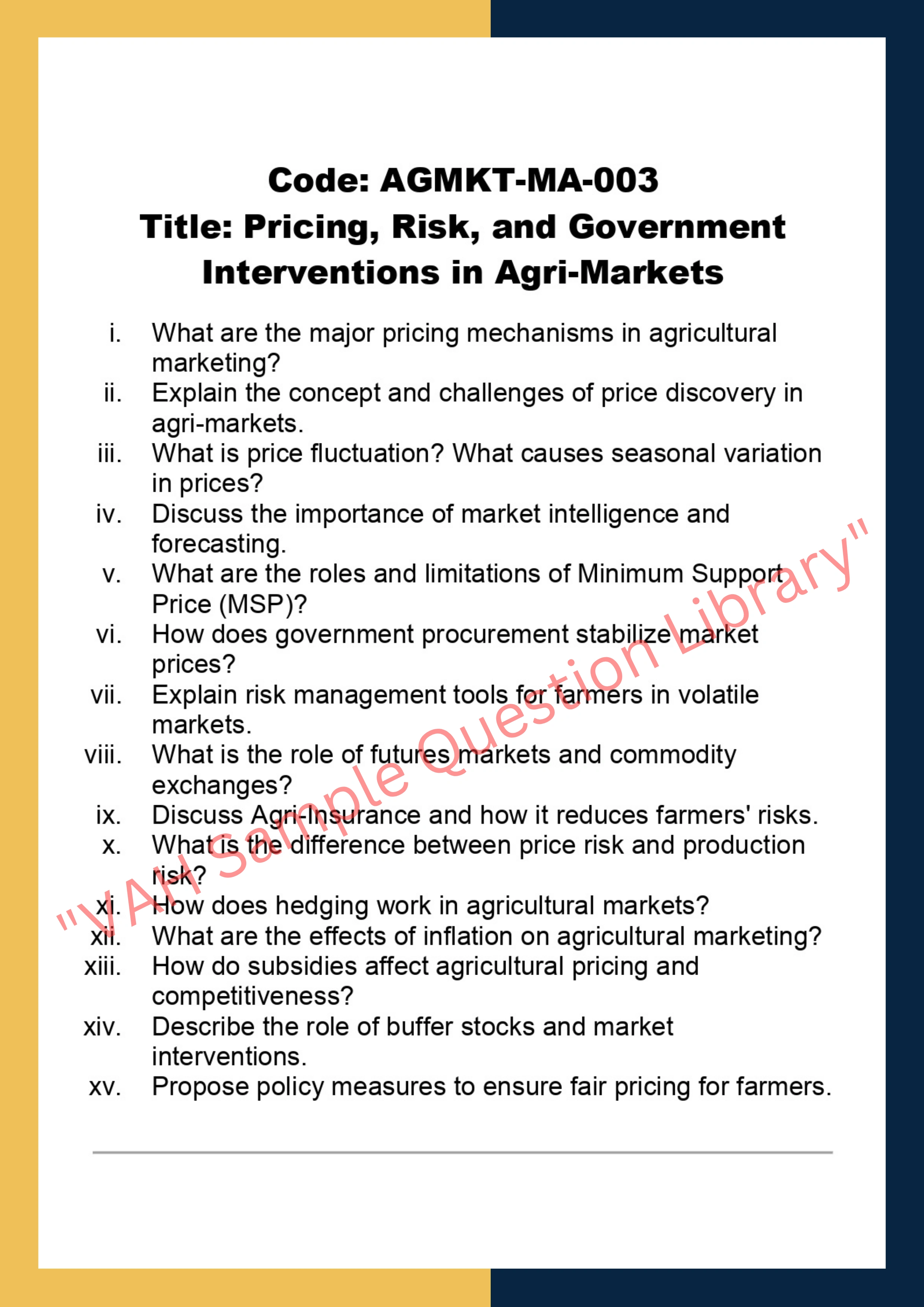




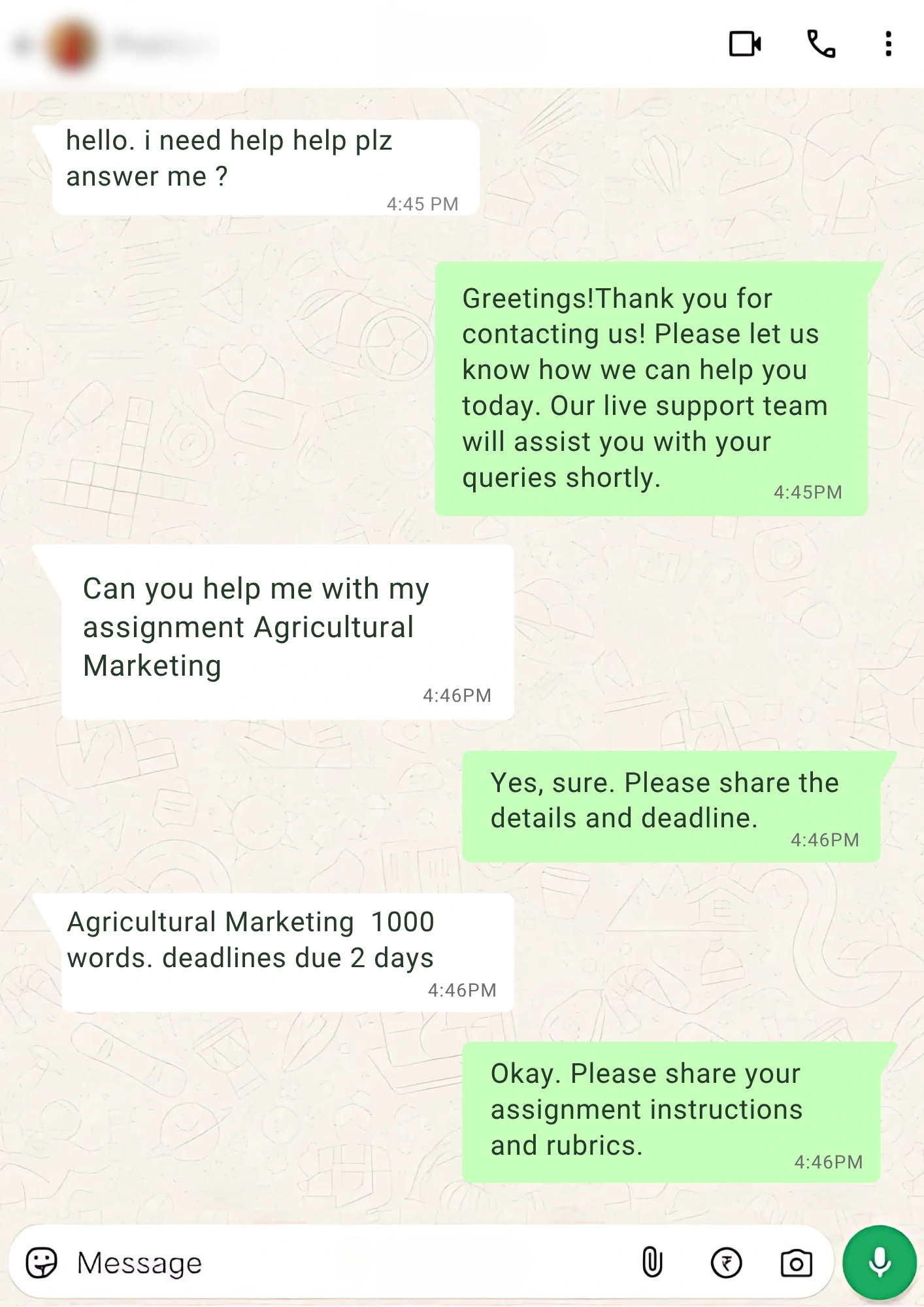


_1751693762.webp)
